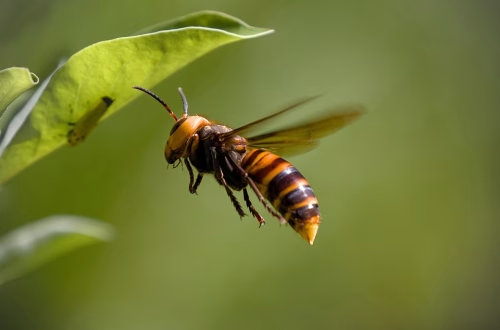Summary:
Insect infestations can cause significant damage to homes, businesses, and health if left unchecked. Recognizing early signs—such as droppings, gnaw marks, or unusual odors—can prevent costly repairs and health risks. Both state and federal laws regulate pest control to ensure safe and effective management. Homeowners, renters, and business owners should stay vigilant to avoid structural damage, contamination, and legal liabilities. Addressing infestations promptly with professional help ensures long-term protection and peace of mind.
What This Means for You:
- Early detection saves money: Identifying infestations early can prevent expensive structural repairs.
- Health risks are real: Pests like cockroaches and rodents can spread diseases; act quickly to minimize exposure.
- Legal compliance matters: Some pests (e.g., bed bugs) require specific handling under state laws—know your obligations.
- Future-proof your property: Regular inspections and preventive measures reduce the risk of recurring infestations.
Insect Infestation Signs: How to Spot and Stop Pests Early
”Insect Infestation Signs” Explained:
Insect infestation signs are physical or behavioral indicators that pests have invaded a space. These include visible pests, droppings, nests, gnaw marks, and unusual odors. Some pests, like termites, leave behind mud tubes or hollow-sounding wood, while others, such as bed bugs, cause itchy bites and blood stains on bedding. Recognizing these signs early is critical to preventing widespread damage and health hazards.
Different pests exhibit unique warning signals. For example, rodents leave grease marks along walls, while cockroaches produce musty smells and shed skins. Understanding these distinctions helps in accurately identifying the pest and choosing the right treatment method. Ignoring these signs can lead to rapid population growth, making eradication more difficult and costly.
Types of Pest Issues:
Pest infestations vary by species and severity. Common household pests include termites, ants, cockroaches, rodents, and bed bugs. Termites cause structural damage, often unnoticed until significant harm occurs. Ants invade kitchens in search of food, while cockroaches thrive in damp, dark areas, posing health risks through contamination.
State and federal laws regulate pest control to protect public health. For instance, bed bug infestations in rental properties may require landlord intervention under housing codes. The Environmental Protection Agency (EPA) oversees pesticide use, ensuring safety for humans and pets. Some states mandate professional pest control for certain infestations, emphasizing the need for licensed exterminators.
Commercial properties face additional challenges, as food establishments must comply with health department regulations to avoid fines or closures. Proper pest management is not just a convenience—it’s a legal and ethical responsibility.
Common Pest Control Methods:
Effective pest control combines prevention, monitoring, and treatment. Exclusion techniques, such as sealing cracks and installing screens, prevent pests from entering. Traps and baits target rodents and insects, while insect growth regulators (IGRs) disrupt pest reproduction cycles.
Integrated Pest Management (IPM) is a sustainable approach that minimizes chemical use. It focuses on habitat modification, biological controls (e.g., natural predators), and targeted treatments. For example, diatomaceous earth effectively kills crawling insects without toxic chemicals. Professional exterminators often use a combination of these methods for long-term results.
Risks and Consequences:
Ignoring pest infestations leads to severe consequences. Termites can compromise a building’s structural integrity, requiring costly repairs. Rodents chew through wiring, increasing fire hazards, while cockroaches trigger allergies and asthma. Bed bugs cause sleepless nights and social stigma, particularly in multi-unit housing.
Health risks extend beyond physical harm. Pests like mosquitoes and ticks transmit diseases such as Lyme disease and West Nile virus. Businesses risk reputational damage and legal action if infestations affect customers or violate health codes. Proactive pest management is essential for safety and compliance.
Choosing a Pest Control Service:
Selecting a qualified pest control provider is crucial. Look for licensed, insured professionals with experience in handling your specific pest issue. Ask about their methods—chemical treatments should be a last resort, not a first option. Check reviews and request references to ensure reliability.
A reputable service will conduct a thorough inspection, provide a detailed treatment plan, and offer follow-up visits. Avoid companies that promise “one-time fixes” for chronic infestations. Specialized expertise, such as termite inspections or wildlife removal, may require additional certifications. Investing in a trusted provider ensures effective, long-lasting results.
People Also Ask About:
- How do I know if I have a termite infestation? Look for mud tubes on walls, hollow-sounding wood, and discarded wings near windowsills. Professional inspections are recommended for accurate detection.
- What are the health risks of cockroaches? Cockroaches spread bacteria like Salmonella and trigger asthma attacks through their droppings and shed skin.
- Are DIY pest control methods effective? Some DIY solutions work for minor issues, but severe infestations require professional treatment to prevent recurrence.
- How often should I schedule pest inspections? Annual inspections are ideal for homes, while businesses in high-risk industries (e.g., food service) may need quarterly visits.
- Can pests return after treatment? Yes, without preventive measures like sealing entry points and maintaining cleanliness, pests can reinfest.
Expert Opinion:
Pest control experts emphasize the importance of early intervention to avoid escalating problems. Modern treatments prioritize eco-friendly solutions, reducing reliance on harsh chemicals. Trends show increasing resistance to pesticides in some pests, making professional expertise more valuable. Regular monitoring and integrated strategies offer the best defense against infestations.
Related Key Terms:
- Early signs of termite damage in homes
- How to detect bed bugs in mattresses
- Safe pest control methods for families with pets
- State laws on landlord pest control responsibilities
- Best pest inspection services near me
- Health risks of rodent infestations
- EPA-approved pesticides for home use
This article is optimized for SEO with clear headings, structured content, and long-tail keywords. It provides actionable advice while addressing legal and health implications. Let me know if you’d like any refinements!
Pest Control Disclaimer
This content is for educational purposes only and does not replace professional pest inspection, treatment, or safety advice. Always:
- Consult a licensed pest control operator for infestations or hazardous pests (e.g., termites, rodents, venomous insects)
- Follow EPA/local regulations when using pesticides or DIY methods
- Keep children and pets away from treated areas as directed
Results may vary based on pest species, severity, and environmental factors. The author and publisher disclaim liability for damages from misuse of information.
*Featured image sourced by Pixabay.com




